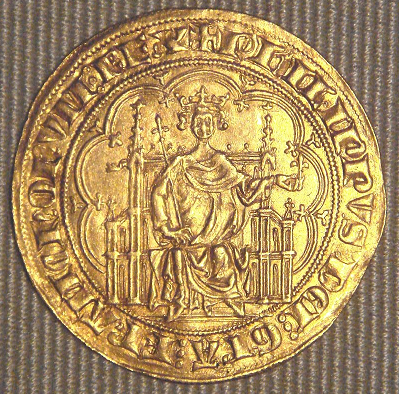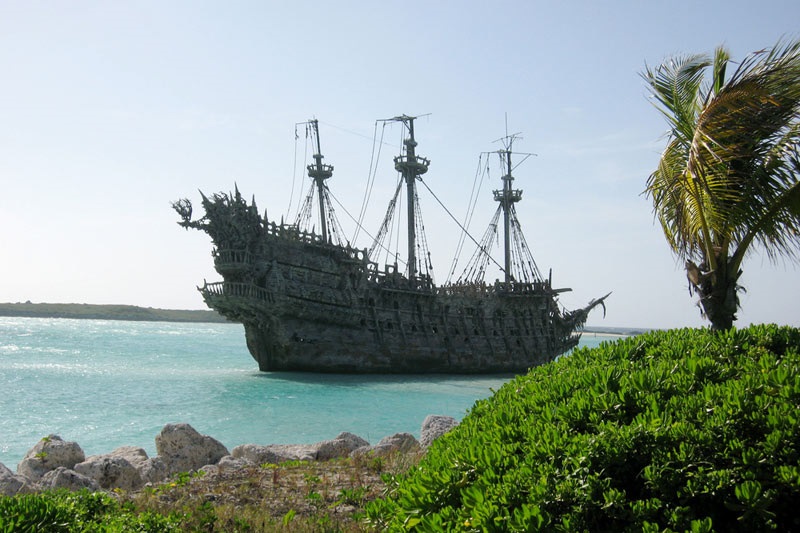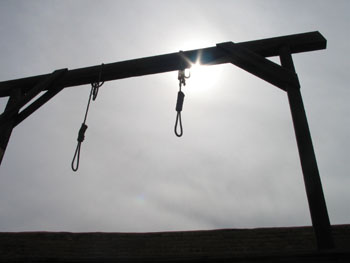It looks like you're using an Ad Blocker.
Please white-list or disable AboveTopSecret.com in your ad-blocking tool.
Thank you.
Some features of ATS will be disabled while you continue to use an ad-blocker.
10
share:
Pirate Attacks, Corruption & Treasure Revealed in Vatican
Archives

What a nice surprise. Everything they have hidden in there and all we get is a story about Fire Fart the Pirate. What about the exiting adventures of Willie Makeit and Betty Wont? How about Gary the Garden Hose who always wets his bed? I can't even imagine what else they have locked away.
Anyways, here is a taste...

A dead bishop's treasure

Pirate attack

Cheating the hangman
These were fun to read and lead me into some interesting research. Do you think these are the accounts of actual events or just entertaining stories?
Also, if anyone is truly interested there is a book being written by Charles Donahue Jr., a professor at Harvard University, called "The Spoils of the Pope and the Pirates, 1357: The Complete Legal Dossier from the Vatican Archives".
I hope you enjoyed them.


A medieval tale of a dead bishop's treasure, a pope and a pirate whose name means "fire blast" or "fire fart" has been revealed in newly published documents from the Vatican archives.
What a nice surprise. Everything they have hidden in there and all we get is a story about Fire Fart the Pirate. What about the exiting adventures of Willie Makeit and Betty Wont? How about Gary the Garden Hose who always wets his bed? I can't even imagine what else they have locked away.
Anyways, here is a taste...

A dead bishop's treasure
In the early months of A.D. 1357, the São Vicente, a ship laden with a dead bishop's treasure, set sail from Lisboa (modern-day Lisbon), according to the Vatican documents.
Its cargo included gold, silver, rings, tapestries, jewels, fine plates and even portable altars. This treasure was formerly owned by Thibaud de Castillon, a recently deceased bishop of Lisboa who had acquired a vast amount of wealth during the performance of his duties.
"He governed and exploited the bishopric through a vicar general for three years while he managed a commercial collaboration with the important Montpellier merchants Peire Laugautru and Guilhem Parayre," Williman and Corsano wrote in their book.His commercial activities in the Mediterranean and Atlantic included speculative trading, buying commodities like wool in hope that its value would increase.
While De Castillon didn't have to take a vow of poverty(not all priests were required to), the ways in which he acquired his wealth were questionablefor someone in his position, Williman and Corsano said. [The 10 Most Notorious Pirates Ever]
"Usury [lending money with a high interest rate] was a mortal sin, and the profit of trading investments was considered usurious," Williman and Corsano said in an email to Live Science. To get around this mortal sin, de Castillon made "clumsy efforts to pretend that his cash wealth and its profits actually belonged to his agents," such as Laugautru and Parayre, Williman and Corsano said.
The papal administration looked the other way. His "past in Atlantic and Mediterranean commerce may have been viewed by the Camera Apostolica [the organization in charge of papal finances] as desirable experience for a bishop in Portugal, and in any case, the Camera intended to take all Thibaud's wealth as spoils when he died," Williman and Corsano wrote in their book.

Pirate attack
The São Vicente's mission was to deliver the dead bishop's treasure to Avignon, in France, where Pope Innocent VI (reign 1352-1362) was based. In the 14th century, popes often resided in Avignon due to political turmoil in Italy. [Papal Primer: History's 10 Most Intriguing Popes]
While sailing near the town of Cartagena, in modern-day Spain, the ship's crew of about a dozen men was attacked by two pirate vessels. One of them was commanded by a man named Antonio "Botafoc." The word botafoc means "fire blast" or "fire fart" — his real last name is lost to history. The other ship was commanded by Martin Yanes.
Botafoc's ship was armed to the teeth. Records indicate that his crew carried cutlasses (swords with curved blades used by sailors and pirates) and war pikes, and his galley had at least seven ballistae, which were large, crossbowlike devices capable of launching 9-inch (23 centimeters) stone bullets at high speeds. Two ballistae would have been placed on the bow, one would have been elevated above the deck and the others could have been movable, Williman and Corsano said.
Faced with this overwhelming firepower, the crew of the São Vicente had little choice but to surrender the treasure.
While Yanes may have made a clean getaway, Botafoc's crew wasn't so lucky. Botafoc'sgalley ran aground near the town of Aigues-Mortes in France. The local garrison captured Botafoc's crew and hanged them on the beach, possibly by the lanteen spar (part of the ship used to rig the sails) of their own galley.
"The poor common sailors were extra-judicially hanged. They were, by tradition, hostes humani generis, enemies of the human race, like highway brigands, and no law protected them," Williman and Corsano told Live Science in an email.
Botafoc and a few of his officers were spared and were sent to prison to await their fate. "Depositing a large amount of gold coin with the bishop of Torino, who happened to be in residence in Montpellier, Botafoc surrendered to the captain of Aigues-Mortes, while his mate and [another officer] went into the custody of the marshal of justice of the papal Curia at Avignon," Williman and Corsano wrote in their book.
Before the authorities could secure the beached pirate vessel, local fishers took items from the ship, claiming right of salvage.
On Feb. 11, 1357, Jean des Baumes, a clerk of a local judge, took inventory of the remaining goods. "Apart from the ship's sail, cordage, oars, armament and rigging, the judge's clerk on the beach listed a great mass of clothing and cloth in odd lots — but also items like books and ecclesiastical vestments," Williman and Corsano wrote.
The recaptured treasure went to the pope and was used as gifts for royalty and to pay soldiers, courtiers and other staff.

Cheating the hangman
While Botafoc's crew was hanged, his officers were let off with a fine, the Vatican records indicate.
It appears that Botafoc himself also managed to escape the hangman's noose, as the fine paid to the Vatican's finance board covered the pirate captain as well, Williman and Corsano told Live Science. However, "the royal sergeants of the Aigues-Mortes garrison could have done anything they wished to him," they said.
The second pirate ship that attacked the São Vicente — the one commanded by Yanes — was never mentioned again in historical records. Yanes' crew may have gotten away cleanly, with a bounty of treasure.
These were fun to read and lead me into some interesting research. Do you think these are the accounts of actual events or just entertaining stories?
Also, if anyone is truly interested there is a book being written by Charles Donahue Jr., a professor at Harvard University, called "The Spoils of the Pope and the Pirates, 1357: The Complete Legal Dossier from the Vatican Archives".
I hope you enjoyed them.

edit on 5-10-2014 by eisegesis because: (no reason given)
a reply to: eisegesis
Great story and thanks for sharing this.
Of course if the Vatican has released this then they have a propaganda motive. Even their priests arn't allowed free access to the archives. I had a Catholic priest friend who did serious research. He had good connections at the Vatican and was given permission to access the archives. When he arrived at the archive it was heavily guarded. He was strip ssearched and allowed in but not allowed any recording devices or even pencil and paper. He was not actually able to walk among the books and peruse. He had to ask for a specific book that he knew was there. They brought the book to him and he was able to read the section that was pertinent to his studies. The book was then taken back and he had to leave with only his memory.
What I find most interesting is that when heretics were identified, tortured for a confession and then burned to death, the books of the heretic were not burned along with him. They were put into the Vatican library. Doesn't that make the keepers of the Vatican library heretics as well?
I doubt that the population of Earth will ever see more than 1 % of that library. The Catholic Church is about power and control not enlightenment.
Great story and thanks for sharing this.
Of course if the Vatican has released this then they have a propaganda motive. Even their priests arn't allowed free access to the archives. I had a Catholic priest friend who did serious research. He had good connections at the Vatican and was given permission to access the archives. When he arrived at the archive it was heavily guarded. He was strip ssearched and allowed in but not allowed any recording devices or even pencil and paper. He was not actually able to walk among the books and peruse. He had to ask for a specific book that he knew was there. They brought the book to him and he was able to read the section that was pertinent to his studies. The book was then taken back and he had to leave with only his memory.
What I find most interesting is that when heretics were identified, tortured for a confession and then burned to death, the books of the heretic were not burned along with him. They were put into the Vatican library. Doesn't that make the keepers of the Vatican library heretics as well?
I doubt that the population of Earth will ever see more than 1 % of that library. The Catholic Church is about power and control not enlightenment.
originally posted by: Char-Lee
a reply to: eisegesis
Matthew 6:19
"Do not store up for yourselves treasures on earth, where moths and vermin destroy, and where thieves break in and steal.
Matthew 10:5:14
He who hideth the knowledge deserveth a swift kick in the ass.
Sorry, that's my name!
edit on 5-10-2014 by eisegesis because: (no reason given)
originally posted by: eisegesis
originally posted by: Char-Lee
a reply to: eisegesis
Matthew 6:19
"Do not store up for yourselves treasures on earth, where moths and vermin destroy, and where thieves break in and steal.
Matthew 10:5:14
He who hideth the knowledge deserveth a swift kick in the ass.
Sorry, that's my name!
a reply to: eisegesis
What's surprising about that?
It's a book, written by an historian, on a subject that he chose to study. Do you think that the Vatican should dictate to scholars what they can study or publish?
Anyone with valid academic credentials can study the Vatican archives, as published on the Vatican website: Access and Consultation. They have a barrier to entry to keep out the nuts -- when you ask to see a Sixth Century document, you're not given a copy, you get your mitts on the real thing.
And to the poster who claimed that you can't bring in anything to takes notes with… no. Just no. Use your brain. How could anyone do serious research if they had to rely on their memory? Why would anyone even bother? Why on earth would the Vatican want people reporting on what's in the archives by relying on their memories?
You can't bring in a pen (potential damage to priceless documents,) but there is no prohibition on pencils and paper. In addition, the Vatican archivists can make photographic reproductions for you: Photographic Reproductions
What a nice surprise. Everything they have hidden in there and all we get is a story about Fire Fart the Pirate.
What's surprising about that?
It's a book, written by an historian, on a subject that he chose to study. Do you think that the Vatican should dictate to scholars what they can study or publish?
Anyone with valid academic credentials can study the Vatican archives, as published on the Vatican website: Access and Consultation. They have a barrier to entry to keep out the nuts -- when you ask to see a Sixth Century document, you're not given a copy, you get your mitts on the real thing.
And to the poster who claimed that you can't bring in anything to takes notes with… no. Just no. Use your brain. How could anyone do serious research if they had to rely on their memory? Why would anyone even bother? Why on earth would the Vatican want people reporting on what's in the archives by relying on their memories?
You can't bring in a pen (potential damage to priceless documents,) but there is no prohibition on pencils and paper. In addition, the Vatican archivists can make photographic reproductions for you: Photographic Reproductions
edit on 6-10-2014 by adjensen because: (no reason given)
Not a surprise for me. The Vatican corrupts everything, even what they say they "own": the Bible.
As for "Lisboa (modern day Lisbon)", that was a good laugh Lisboa is just Portuguese for Lisbon, it's not like the city changed its name!
As for "Lisboa (modern day Lisbon)", that was a good laugh Lisboa is just Portuguese for Lisbon, it's not like the city changed its name!
a reply to: guitarplayer
… and yet the Vatican gets roundly criticized, both from within the church and from without, when it does something like this: Porsche rents Sistine Chapel for Pope's charity.
A sure sign that there's no pleasing some people.
… and yet the Vatican gets roundly criticized, both from within the church and from without, when it does something like this: Porsche rents Sistine Chapel for Pope's charity.
A sure sign that there's no pleasing some people.
new topics
-
President BIDEN Vows to Make Americans Pay More Federal Taxes in 2025 - Political Suicide.
2024 Elections: 1 hours ago -
Ode to Artemis
General Chit Chat: 2 hours ago -
Ditching physical money
History: 5 hours ago -
One Flame Throwing Robot Dog for Christmas Please!
Weaponry: 6 hours ago -
Don't take advantage of people just because it seems easy it will backfire
Rant: 6 hours ago -
VirginOfGrand says hello
Introductions: 7 hours ago -
Should Biden Replace Harris With AOC On the 2024 Democrat Ticket?
2024 Elections: 7 hours ago -
University student disciplined after saying veganism is wrong and gender fluidity is stupid
Education and Media: 10 hours ago -
Geddy Lee in Conversation with Alex Lifeson - My Effin’ Life
People: 11 hours ago -
God lived as a Devil Dog.
Short Stories: 11 hours ago
top topics
-
Hate makes for strange bedfellows
US Political Madness: 16 hours ago, 20 flags -
University student disciplined after saying veganism is wrong and gender fluidity is stupid
Education and Media: 10 hours ago, 12 flags -
Police clash with St George’s Day protesters at central London rally
Social Issues and Civil Unrest: 13 hours ago, 9 flags -
President BIDEN Vows to Make Americans Pay More Federal Taxes in 2025 - Political Suicide.
2024 Elections: 1 hours ago, 7 flags -
TLDR post about ATS and why I love it and hope we all stay together somewhere
General Chit Chat: 14 hours ago, 7 flags -
Should Biden Replace Harris With AOC On the 2024 Democrat Ticket?
2024 Elections: 7 hours ago, 6 flags -
Don't take advantage of people just because it seems easy it will backfire
Rant: 6 hours ago, 4 flags -
One Flame Throwing Robot Dog for Christmas Please!
Weaponry: 6 hours ago, 4 flags -
God lived as a Devil Dog.
Short Stories: 11 hours ago, 3 flags -
Ditching physical money
History: 5 hours ago, 3 flags
active topics
-
Why to avoid TikTok
Education and Media • 17 • : mooncake -
The Superstition of Full Moons Filling Hospitals Turns Out To Be True!
Medical Issues & Conspiracies • 22 • : mooncake -
University student disciplined after saying veganism is wrong and gender fluidity is stupid
Education and Media • 23 • : BigDuckEnergy -
President BIDEN Vows to Make Americans Pay More Federal Taxes in 2025 - Political Suicide.
2024 Elections • 3 • : BingoMcGoof -
Russia Ukraine Update Thread - part 3
World War Three • 5717 • : Arbitrageur -
Should Biden Replace Harris With AOC On the 2024 Democrat Ticket?
2024 Elections • 44 • : budzprime69 -
Hundreds of teenagers flood into downtown Chicago, smashing car windows
Other Current Events • 111 • : 777Vader -
British TV Presenter Refuses To Use Guest's Preferred Pronouns
Education and Media • 125 • : Annee -
Who guards the guards
US Political Madness • 4 • : kwaka -
New whistleblower Jason Sands speaks on Twitter Spaces last night.
Aliens and UFOs • 44 • : pianopraze
10
